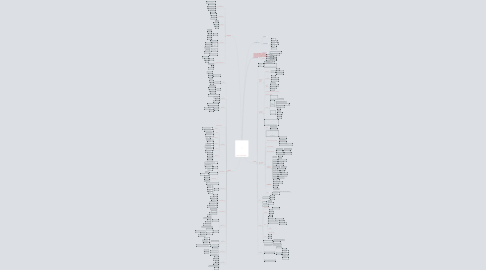
1. Guy Kawasaki
1.1. Other books
1.2. Social
1.2.1. Website
1.2.2. Bio & contact
1.2.3. Twitter (@GuyKawasaki)
1.2.4. Google+
2. APE Resources
2.1. Amazon
2.2. APE Website
2.2.1. Assets
2.2.2. Downloads
2.2.3. Book links
2.2.4. SPIT
2.2.5. Updates
3. “When a self-publisher successfully fills three roles-author, publisher and entrepreneur-the potential benefits are greater than with traditional publishing”
3.1. Complete control over your book
3.2. Determine your own fate
3.3. Retain all rights
3.4. Greater revenue
4. Author
4.1. Publishing is a parallel process
4.1.1. Simultaneous steps at once
4.1.2. Jump around the book as needed
4.2. Should you write the book?
4.2.1. Satisfying
4.2.1.1. but NOT
4.2.1.1.1. easy
4.2.1.1.2. always enjoyable
4.2.1.1.3. big money maker
4.2.2. Bad reasons
4.2.2.1. Money
4.2.2.2. Popular demand
4.2.2.3. Impress people
4.2.3. Good reasons
4.2.3.1. Enrich lives
4.2.3.2. Intellectual challenge
4.2.3.3. Further a cause
4.2.3.4. Catharsis
4.2.4. Are you passionate about your message?
4.3. Traditional publishing
4.3.1. Resistant to change
4.3.2. Process
4.3.2.1. Very, very lengthy
4.3.2.1.1. Uncertainty
4.3.2.2. Publish small % of books
4.3.2.2.1. Tough to predict a bestseller
4.3.2.2.2. Many famous authors got rejected
4.3.2.2.3. Rejection is part of life
4.3.2.3. Many players
4.3.2.3.1. Agent
4.3.2.3.2. Editor
4.3.2.3.3. Copyeditor
4.3.2.3.4. Designer
4.3.2.3.5. Publicist
4.3.3. So You Want to Write a Novel [4:38]
4.3.4. Future?
4.3.4.1. Multiple formats
4.3.4.2. Beyond just books
4.4. Self-Publishing Revolution
4.4.1. On Publishing
4.4.2. Infinite shelf space with ebooks
4.4.2.1. No shipping costs
4.4.2.2. No printing costs
4.4.2.3. Immediate delivery
4.4.2.4. First choice for self-published authors
4.4.3. “artisanal publishing”
4.4.4. 3Ds of Self-Publishing
4.4.4.1. Democratization
4.4.4.1.1. Anyone can publish
4.4.4.2. Determination
4.4.4.2.1. Author is in charge
4.4.4.3. Disintermediation
4.4.4.3.1. Direct distribution
4.4.5. Advantages for authors
4.4.5.1. Control
4.4.5.1.1. Content
4.4.5.1.2. Design
4.4.5.2. Longevity
4.4.5.2.1. Keep the book alive
4.4.5.3. Revisions
4.4.5.3.1. Immediate
4.4.5.4. Money
4.4.5.4.1. Higher royalty
4.4.5.5. Direct connection
4.4.5.5.1. with readers
4.4.5.6. Price
4.4.5.6.1. can be easily changed
4.4.5.7. Time to market
4.4.5.7.1. is faster
4.4.5.8. Global distribution
4.4.5.8.1. Foreign rights
4.4.5.9. Analytics
4.4.5.9.1. are available to author
4.4.5.10. Flexibility
4.4.5.10.1. Mass copies
4.4.6. Disadvantages for authors
4.4.6.1. No advance
4.4.6.2. Don't have a help team
4.4.6.3. Marketing
4.4.6.4. Prestige
4.4.6.5. Distribution
4.4.7. Plan C
4.4.7.1. Self-publishing as a means to traditional publishing
4.4.7.2. AmazonEncore
4.5. Tools
4.5.1. Writing program
4.5.1.1. Editing
4.5.1.2. Styles
4.5.2. Utilities
4.5.2.1. Writing
4.5.2.2. Organization
4.5.3. Collaboration
4.6. Writing
4.6.1. What's your story?
4.6.1.1. What's your pitch?
4.6.2. Research
4.6.2.1. Books
4.6.2.2. Articles
4.6.2.3. Web
4.6.3. Write
4.6.3.1. Outline
4.6.3.2. "Vomit" draft
4.6.3.2.1. Postpone self-criticism
4.6.3.3. Google Docs for feedback
4.6.3.3.1. Comments
4.6.3.3.2. Shared ownership
4.6.3.4. Focus!
4.6.3.5. Write every day!
4.6.4. Finish
4.6.4.1. Edit
4.6.4.2. Read
4.6.5. Write the book yourself
4.6.5.1. Don't write to impress others
4.6.5.2. Be true to yourself
4.7. Financing
4.7.1. ~ $4000 for ebook
4.7.1.1. More for printed book
4.7.2. How will you get the money?
4.7.2.1. Reduce costs
4.7.2.2. Raise money
4.7.2.2.1. Friends
4.7.2.2.2. Indiegogo
4.7.2.2.3. Unbound
4.7.2.2.4. Pubslush
4.7.2.2.5. Kickstarter
4.7.3. How many books can you sell?
5. Publisher
5.1. Editing
5.1.1. Content editing
5.1.1.1. Organization
5.1.1.2. Structure
5.1.1.3. Content
5.1.1.4. Style
5.1.2. Copyediting
5.1.2.1. Writing
5.1.2.2. Errors
5.1.3. Who?
5.1.3.1. Friends & family
5.1.3.2. Niche communities
5.1.3.3. Crowdsourcing
5.1.3.4. Professionals
5.2. Book look
5.2.1. Little details make a difference
5.2.2. Front matter
5.2.3. Writing
5.2.4. Interior design
5.3. Book cover
5.3.1. Stand out at postage-stamp size
5.3.2. First thing that readers notice
5.3.3. Examples
5.3.3.1. Book Cover Archive
5.3.3.2. Amazon
5.4. Book distribution
5.5. Book selling
5.5.1. Amazon
5.5.1.1. Kindle Direct Publishing
5.5.2. Apple
5.5.2.1. Registration at iBooks
5.5.2.2. iTunes Connect
5.5.2.3. iTunes Producer
5.5.3. Barnes & Noble
5.5.3.1. PubIt
5.5.4. Google
5.5.4.1. Google Play
5.5.4.2. Publishers
5.5.4.3. Google Books
5.5.4.4. Google Uploader
5.5.5. Kobo
5.5.5.1. KoboWritingLife
5.5.6. Royalties
5.5.6.1. Amazon: 70%
5.5.6.2. Apple: 70%
5.5.6.3. B&N: 65%
5.5.6.4. Google: 52%
5.5.6.5. Kobo: 70%
5.6. Book conversion
5.6.1. Comparison of e-book formats
5.6.2. Tools
5.6.2.1. Adobe InDesign
5.6.2.2. iBooks Author
5.6.2.3. Pages
5.6.3. Conversion services
5.6.3.1. Sites
5.6.3.2. Freelancers
5.6.4. Additional tips
5.6.4.1. Encryption
5.6.4.2. Image sizes
5.6.4.3. Print books
5.7. Direct selling
5.7.1. Can you reach customers directly?
5.7.2. Services
5.7.2.1. Gumroad
5.7.2.2. E-junkie
5.7.2.3. ClickBank
5.7.2.4. Ganxy
5.8. Author-Services
5.8.1. Lulu
5.8.2. Smashwords
5.8.3. BookBaby
5.8.4. Author Solutions
5.8.5. Blurb Bookstore
5.8.6. CreateSpace (Amazon)
5.9. Print-on-Demand
5.9.1. Print-to-Publisher
5.9.2. Print-to-Order
5.9.3. Print-to-Warehouse
5.10. Book pricing
5.10.1. Considerations
5.10.1.1. Costs
5.10.1.2. Market conditions
5.10.1.3. Brand
5.10.1.4. Competition
5.10.1.5. Pricing philosophy
5.10.2. Strategies
5.10.2.1. Start low to build critical mass
5.10.2.2. Run promotions
5.10.2.3. KDP Select
5.10.2.3.1. Sell exclusively on Amazon
5.10.2.3.2. 5 free days
5.10.2.3.3. Lending library
5.11. Book audio
5.11.1. Audio for customers
5.11.1.1. Audible
5.11.1.2. Books on Tape
5.11.1.3. OverDrive
5.11.2. Audio for authors
5.11.2.1. Audiobook Creation Exchange (ACX)
5.12. Foreign rights
5.12.1. Translations
5.12.2. Countries of interest
5.12.2.1. Population
5.12.2.2. Language
5.12.3. Foreign publishers
5.13. Other issues
5.13.1. Rip-offs
5.13.2. Copyright
5.13.3. DRM
5.13.4. Borrowing
5.13.5. Work-for-Hire Agreements
5.13.6. Revisions
6. Entrepreneur
6.1. Guerilla-Marketing
6.1.1. Understand how people discover your books
6.1.2. Cover the Earth
6.1.3. Make reviewing easy
6.1.4. Do something fun
6.1.5. Cost = $0
6.2. Personal brand
6.2.1. Trustworthiness
6.2.2. Likeability
6.2.3. Competence
6.3. Platform
6.3.1. E-mail
6.3.2. Newsletter
6.3.3. Website
6.3.4. Blog
6.4. Social media
6.4.1. Services
6.4.1.1. Google+
6.4.1.2. Facebook
6.4.1.3. Twitter
6.4.1.4. LinkedIn
6.4.1.5. Pinterest
6.4.2. Creating a profile
6.4.3. Sharing on social media
6.4.3.1. Sources of info
6.4.3.2. Writing posts
6.4.4. Commenting & responding
6.4.4.1. Help people
6.4.4.2. Add value
6.4.4.3. Stay on topic
6.4.5. Social media goodies
6.5. Bloggers and reviewers
6.5.1. Pitching
6.5.1.1. Whom to pitch
6.5.1.2. Services
6.5.1.3. DIY
6.5.2. Press release
6.5.3. PR
6.5.4. Book tours
